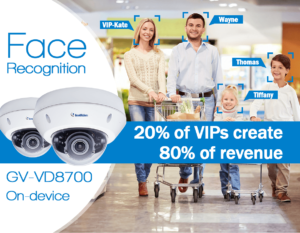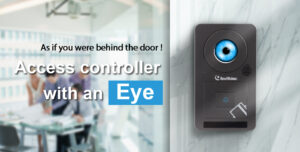
There are certain parameters to determine the quality or effectiveness of a multimodal biometric solution. Capacity, false acceptance rate and false rejection rate are some examples. But ultimately, choosing a system requires a basic understanding of how it fits the user’s environment or suits their specific needs.
When evaluating a multimodal biometric solution, users can refer to the system’s hardware features and other specifications. (The criteria for evaluation include) speed of capture, speed of response, code footprint (a document which shows a structure owner’s compliance with state law to protect occupants from the dangers of fire and explosion), CPU/memory requirements, FMR (False Match Rate), FNMR (False Non-Match Rate), Equal Error Rate ((EER) is a biometric security system algorithm used to predetermine the threshold values for its false acceptance rate and its false rejection rate), failure to enroll rate, liveness detection performance and uniformity of performance across different age/sex/race groups.
Easy deployment, registration and speed as the primary factors to consider. The reader must not have many restrictions on the location of installation, the registration must not be hard and each verification must be done in a split second without any error.
The IP type multi-mode readers connect to the network, and some models can be powered over Ethernet (PoE). They have a pigtail that connects to the electric lock, the door sensors, the power to the lock, the AUX switch, etc. The reduced wiring makes it easy to self-install the system. There are biometric readers with Wiegand interfaces and other with IP interfaces. IP readers are easier to self-install if you are knowledgeable about computer systems and networks.These days, IT type integrators have started to replace the older analog type security dealers and integrators.

Equally important is ease of enrollment. If you require more than one reader, you need to consider the door access software. The software provides easy enrollment for all the readers. You want to be able to have a central place to record the facial or fingerprint, or even card credential information and then have the system automatically broadcast the credential information to all the readers. The software makes it easy to edit the people in the system. You want to be able to add, delete and change rights of all the enrolled people. The readers should store the enrollment database so that even if the network is not working the readers will still operate (as long as they have power).
Support is also key. Working with a specialized distributor that can provide presales support, installation support, and post technical support assures that the integrator provides the right equipment, and can successfully support the installation.
Ultimately, the user needs to choose a solution that fits their own application scenario and suits their own needs. False-acceptance-rate and false rejection-rate statistics are not reliable indicators of biometric success. The only way for a customer to choose the best-suited biometric technology is by testing in their own environment with their own users, taking into consideration their users’ demographic characteristics (age, skin color and blue-collar or white-collar type work). An expensive high-performance car won’t operate well on a snow-capped mountain. And a fingerprint reader won’t operate well for construction workers, regardless which vendor’s fingerprint recognition technology you use.
When it comes to biometrics there is no ‘one size fits all’. First determine your budget. Then determine which doors are the most important which you need to protect (that is, data center, financial records room or warehouse). Then determine if the readers will be placed indoor or outdoor. If ‘outdoor’ then fingerprint readers are more desirable. Also determine which is a priority – security or convenience. There is nothing more convenient than looking into a camera and having the door automatically open. If security matters most, then perhaps a combination fingerprint plus card or a multi-biometric is best suited. The challenging news about today’s technology is that there are so many biometric options to choose from. The great news is that if you can find a biometrics expert, you’ll certainly have the best-suited affordable security solution tailor-fit for your business and technology requirements.

Current challenges
Despite multimodal biometrics’ growth potential, certain challenges still remain. Users’ reluctance to adopt is one of them. Fingerprint and now face recognition are quickly being adopted by consumers all over the world, thanks mostly to the smart phone manufactures. Not only are fingerprint and face recognition terrific for added security, this biometric technology also provides tremendous convenience since you no longer need to remember your pass code. The only reason why customers don’t more so implement fingerprint and/or face recognition technology in their offices is due to the perceived cost of ‘change.’
This underscores the importance of market education. The market expects biometric readers to cost more than conventional card readers. Market education is required to explain how prices have decreased to the point where biometric readers (and even the multimodal readers) are about the same price as some of the card credential type IP readers.
Another challenge is the user’s privacy concerns. Even though the latest readers don’t store pictures of a face or even a fingerprint, the market is concerned that this information can be stolen or used incorrectly. The latest readers only store a code associated with a templet that has been created from the biometrics so privacy is not a real problem.
Adapted from a&s Magazine



































































